The Memoriale della Shoah, a new Holocaust memorial, opened this summer under the Stazione Centrale (Central Train Station) in Milan. It requires our attention: not just inherently, because the subject is so important, but architecturally, because of the skill of the architects in finding compelling ways to bring this terrible period alive. The design is by Morpurgo de Curtis, a partnership founded in 2006 in Milan with a varied portfolio of housing, exhibition, and interior design. Guido Morpurgo previously worked for Vittorio Gregotti, Annalisa de Curtis for Umberto Riva.
Few passing through the Stazione Centrale (1912–31) know that underneath is an additional set of tracks used by the Italian postal service, but long abandoned. There, 80 years ago, Jews, Romani people, and enemies of the Nazi occupiers were sent north in boxcars to extermination and internment camps. Forced in through the postal entrance, they climbed into bare, unheated cars that were then shunted onto a hydraulic elevator and brought up to the main level, alongside trains bound for the rest of Italy. In all, approximately 1,200 Jews were sent from this spot north in 15 convoys between 1943 and 1945. Today this is the site of the Memoriale della Shoah.
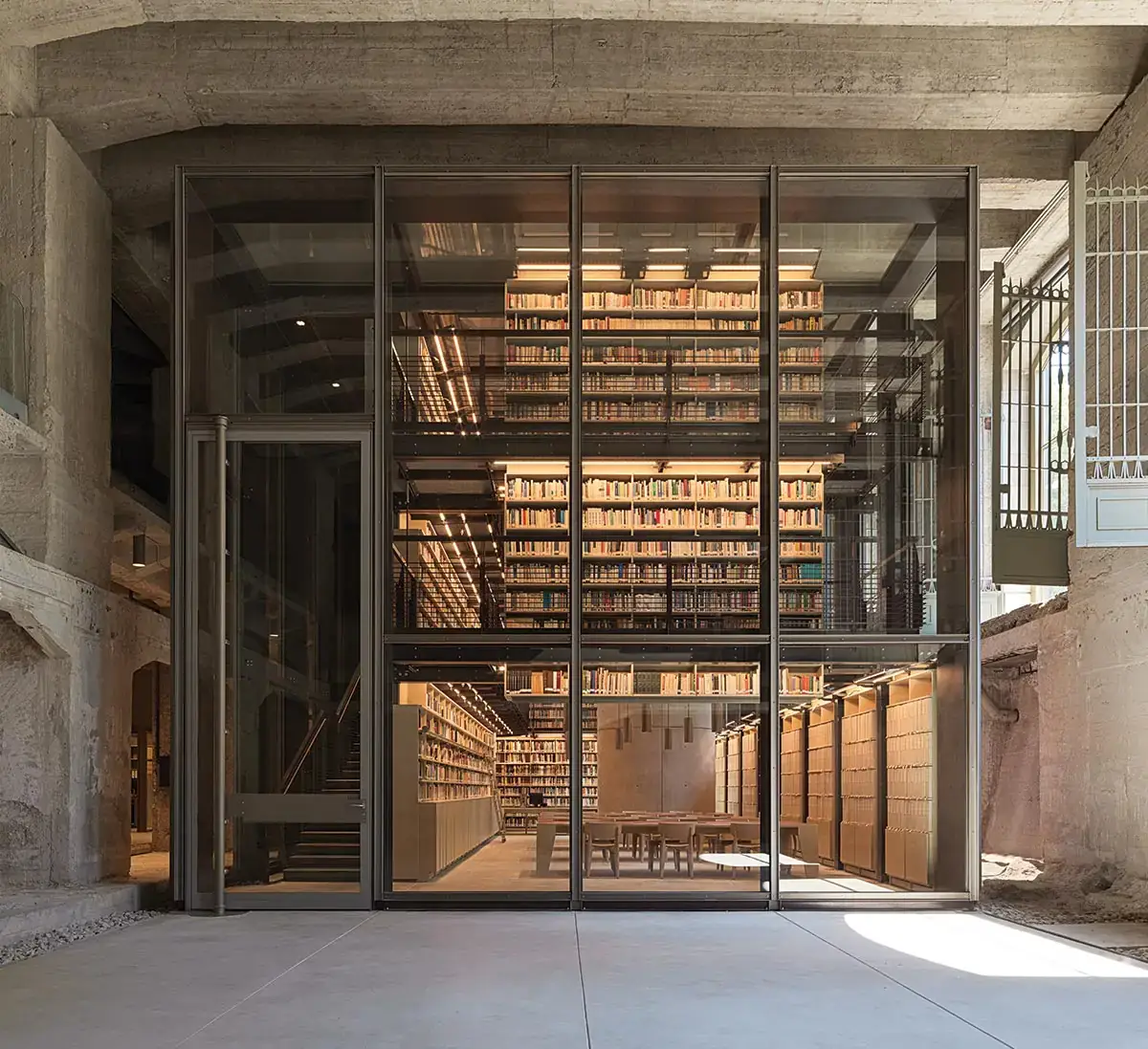
A library has been inserted on multiple levels, with an open “agora” at the bottom. Photo © Matteo Piazza, click to enlarge.
Following the same route as the deportees, one enters under a Doric portico, arriving in a hall dominated by the word “indifferenza” cut into a monumental freestanding angled concrete slab. Adjacent to that entry hall is a brightly lit two-story modernist library and archive of Jewish history, its books and desks visible behind steel and glass. This is a singular moment, with lessons both moral and historical. We are truly in the antechamber to hell, the place where Dante, in The Divine Comedy, confined those who in their lives had practiced indifferenza, doing neither good nor evil. We are left to reflect on the anxiety of the deportees, the horror of their ride to nothingness, and our own indifference.
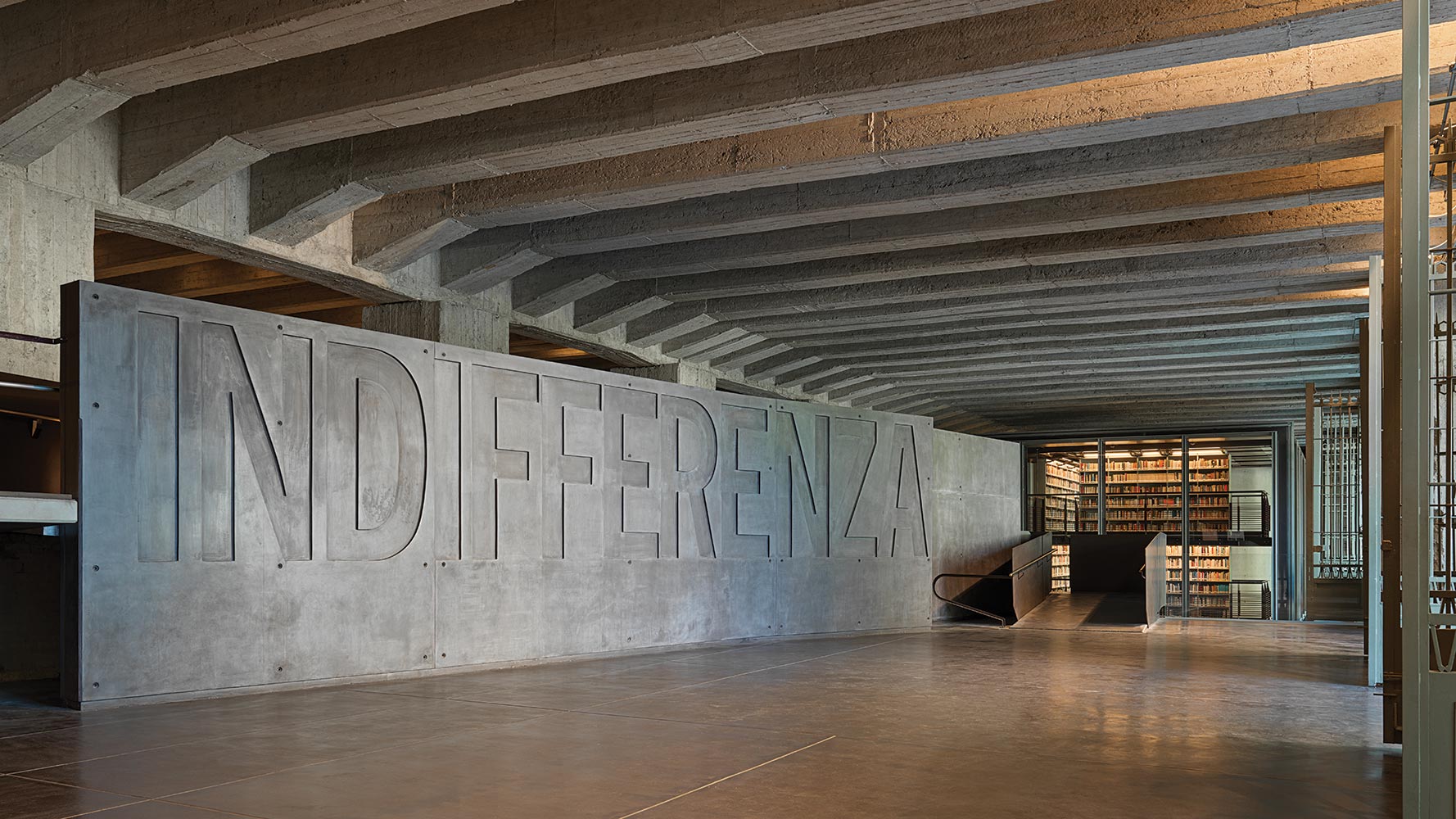
The entry hall introduces the memorial’s message about the indifference that allows evil to happen. Photo © Matteo Piazza
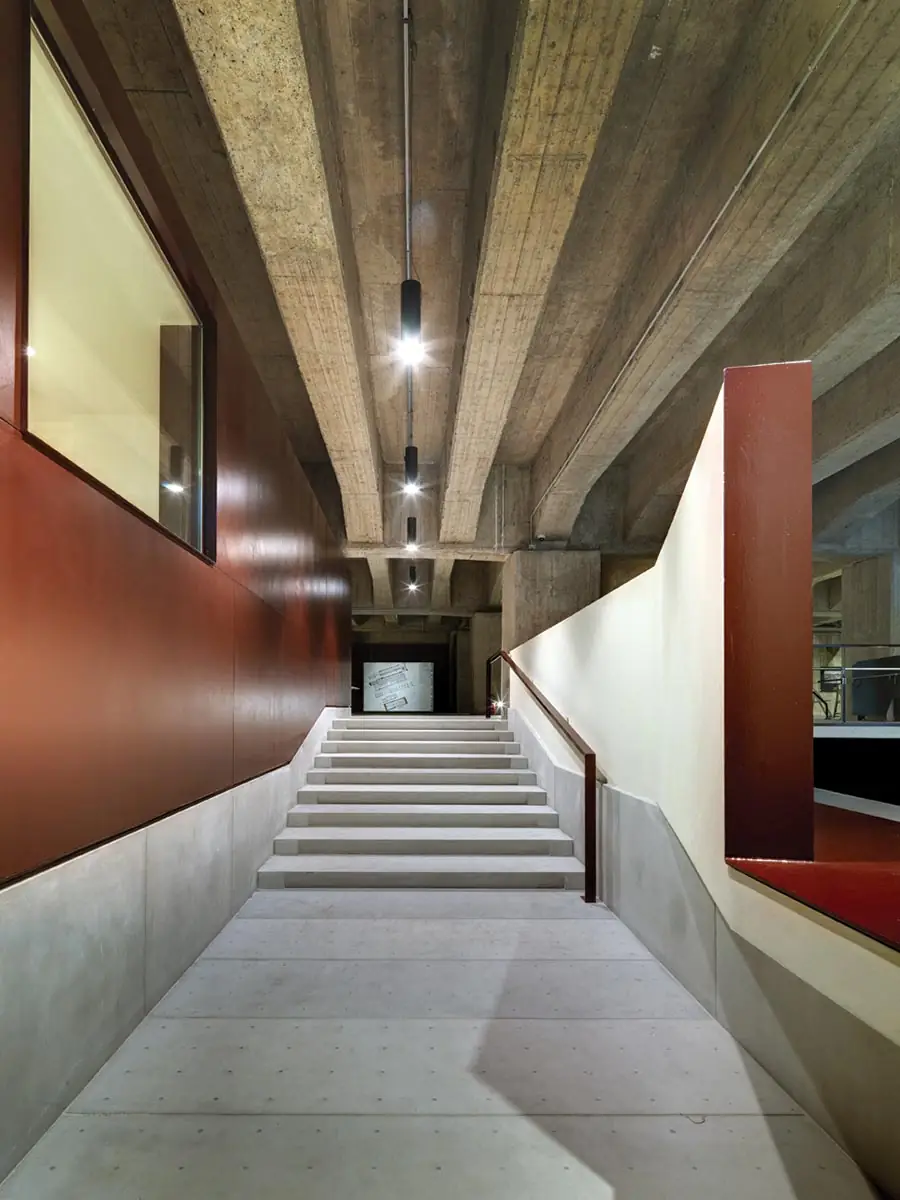
Stairs off the entry hall lead to offices. Photo © Andrea Martiradonna
The architects have made two major decisions for this underground space. First, they have stripped everything down to bare gray concrete. What remains is the texture of the formwork; damage, rough joints, and partially protruding rebars have been retained. We are in a darkened, partially ruined Brutalist hypostyle hall of piers and beams. Then, rather than giving us a direct path to the train tracks and its huge rail elevator, the architects have unsettled the route into the Memoriale with switchback steel ramps hidden behind the wall of indifferenza. At the top of the ramps, one might imagine a sculpture but, instead, there is a large cone and a pair of telescopic lenses looking toward the tracks, from which we can view film footage showing the opening of the station in 1931, bringing the past into focus. From there, a long hall stretches out between concrete piers and raised, pod-like steel rooms accessed by steel ramps. There, groups can sit on bare benches and watch film clips; of note is the testimony of Liliana Segre, now 93 years old and an Italian senator but, once, a 13-year-old deportee who left from this site with her father for Auschwitz. He did not return. Deeper into the Memoriale, and parallel to the hall, are the train tracks, with boxcars like those used for the deportees. At a lower level still is a lecture hall, classrooms, and offices—new spaces that recall the great Milanese Modernist design tradition.
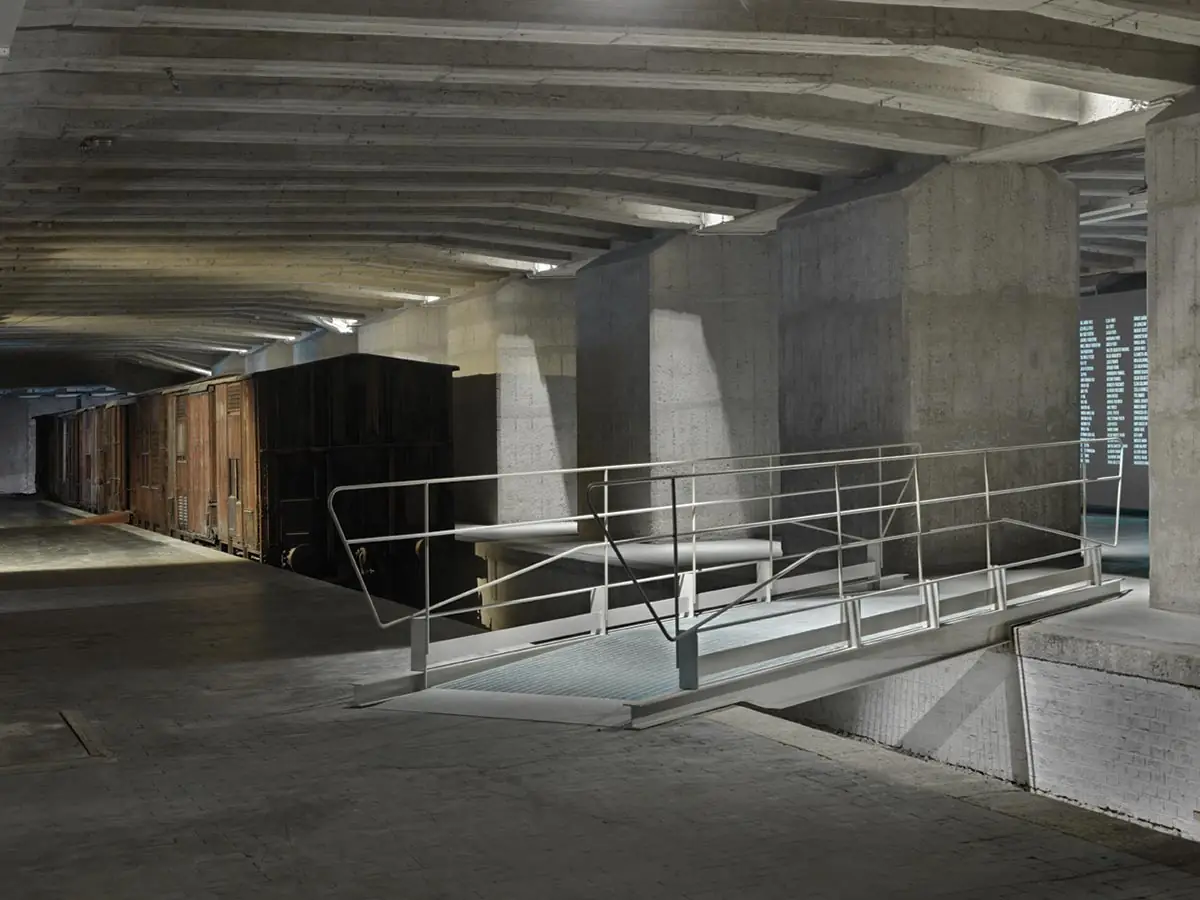
Boxcars like those used to transport people to extermination camps populate the memorial. A wall with the names of victims can be seen in the background. Photo © Andrea Martiradonna
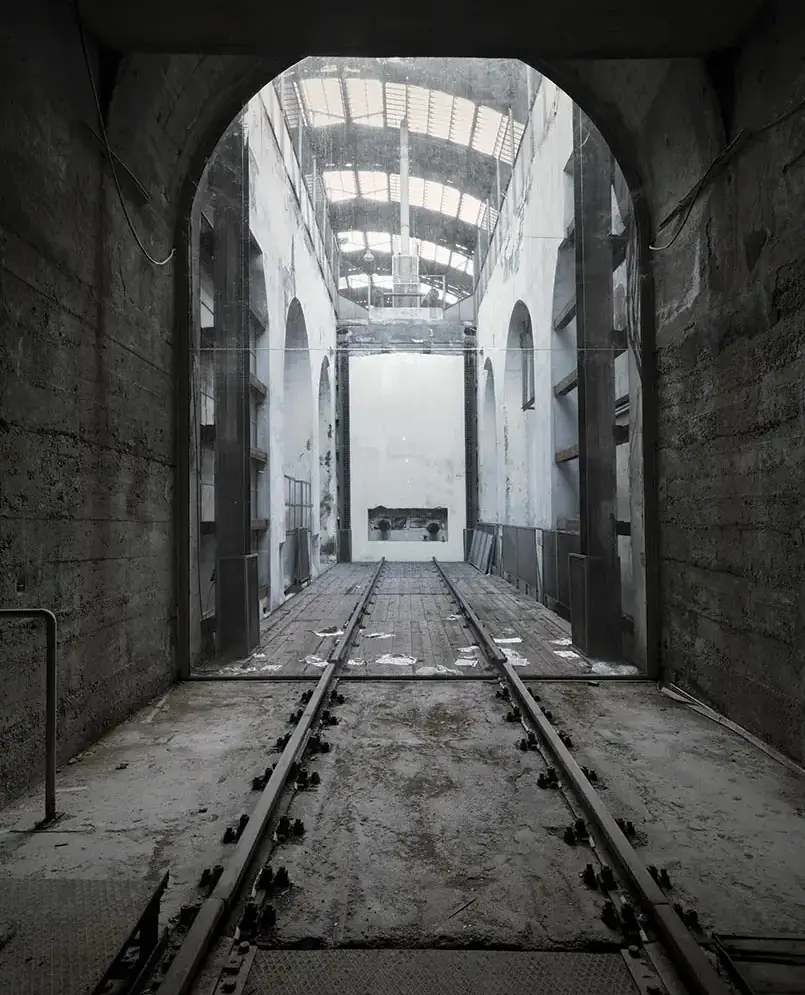
Cars could be lifted from tracks to the main station. Photo © Andrea Martiradonna
And so we walk through the dry urban wound where, now as then, the sound of the trains from the station overhead fills the space. (Trains, after all, are symbols of deportation; boxcars from all over Europe brought human cargo to the gas chambers, themselves strategically placed to facilitate the Final Solution.) Step inside a boxcar yourself? They are waiting on the platform. Imagine them with 60 to 80 people inside on a five- or six-day journey. All this is emotionally powerful, of course—how could it be otherwise? A sign along the back wall of the elevator states that it should not be used for human passengers. Along the far wall beyond the cars and along a wall overlooking the tracks are projected 774 names of the deportees from two of the convoys, in red for those few who survived, in white, those who did not, whole families seemingly wiped out.
The Memoriale is not a place that summarizes an institutionalized collective memory. The critical achievement of the architects is to bring visitors to contemplate their own indifference. Morpurgo de Curtis proposes to translate Bertolt Brecht’s “alienation effect,” the “verfremdungseffekt,” into architecture. Through jolting reminders of the artificiality of the space, visitors are not allowed to submerge themselves in a narrative. (The Memoriale is not, the architects insist, a museum; the explanatory historical panels currently along the walls, important as their story is, are undersized and look trivial. One day, perhaps, they can be placed downstairs in an exhibition area.) The “distancing” is also literal: the new two-story library echoes Skidmore, Owings & Merrill’s Beinecke Library at Yale in New Haven as if to say, “Here stands the past, a delicate Modernist box, in a dystopian concrete underground.” Was Modernist order-making also part of the problem (as highlighted in works such as the 1989 Modernity and the Holocaust by Polish sociologist Zygmunt Bauman)? Machine efficiency diffused responsibility and made complicity painless: it is only infrastructure. Everyone, German occupiers and Italian enablers, followed the rules. The very banality of this evil space recalls the subtitle of Hannah Arendt’s famous report on the Adolf Eichmann trial (1963). There is no comforting spiritual presence here, no relief mission of grace reaches us.
At one point, the architects offer a place for reflection. At the northern end of the Memoriale, beyond the platforms and the wall of names, is a meditation space inside a weathering steel cone. Entry is along a narrow winding path, the effect like snaking between the walls of a sculpture by Richard Serra. Inside, a low bench rings the interior; an oculus casts a low light. We sit, but all we see are our neighbors, our family, our schoolmates. What would we have done?
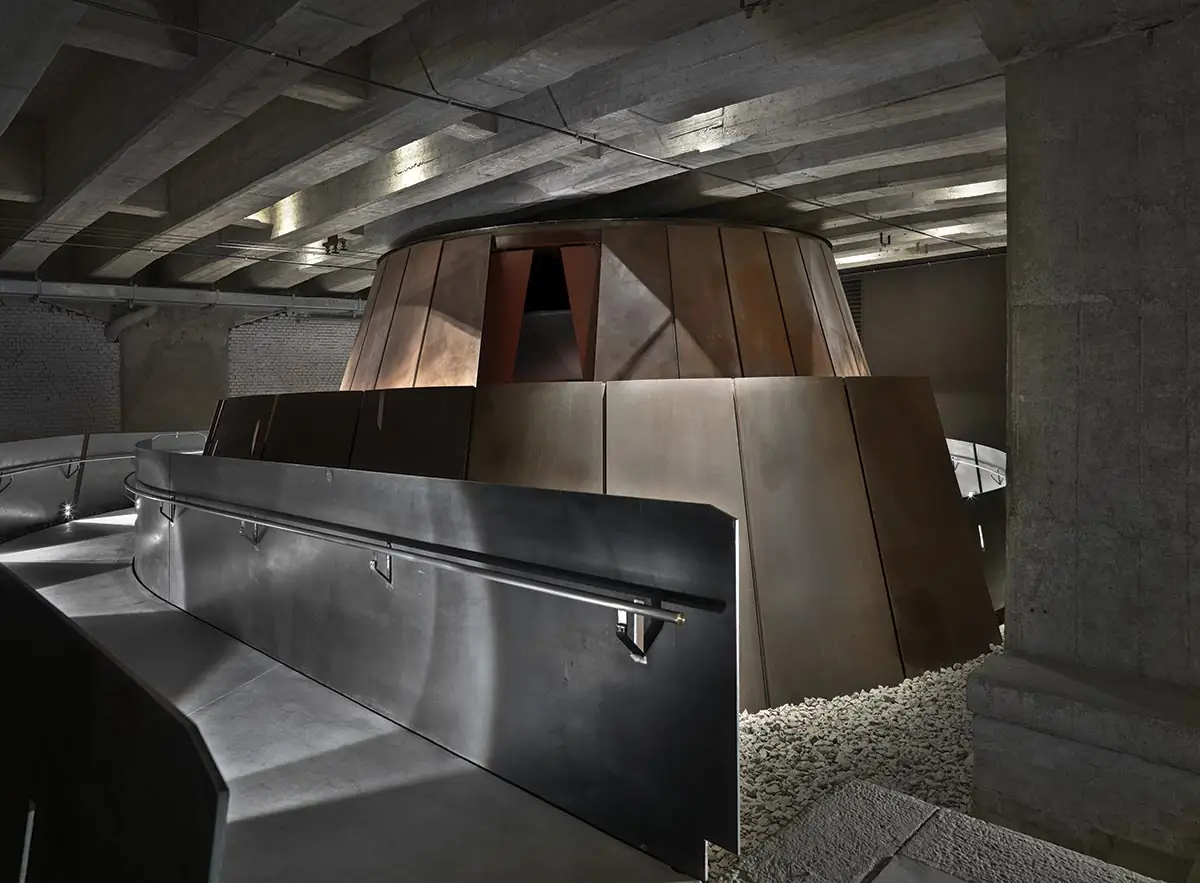
1
A conical form contains a space for reflection (1), while a tubular “observatory” (2) offers views of a screen with projected images. Photos © Andrea Martiradonna (1), Enrico Miglietta (2)
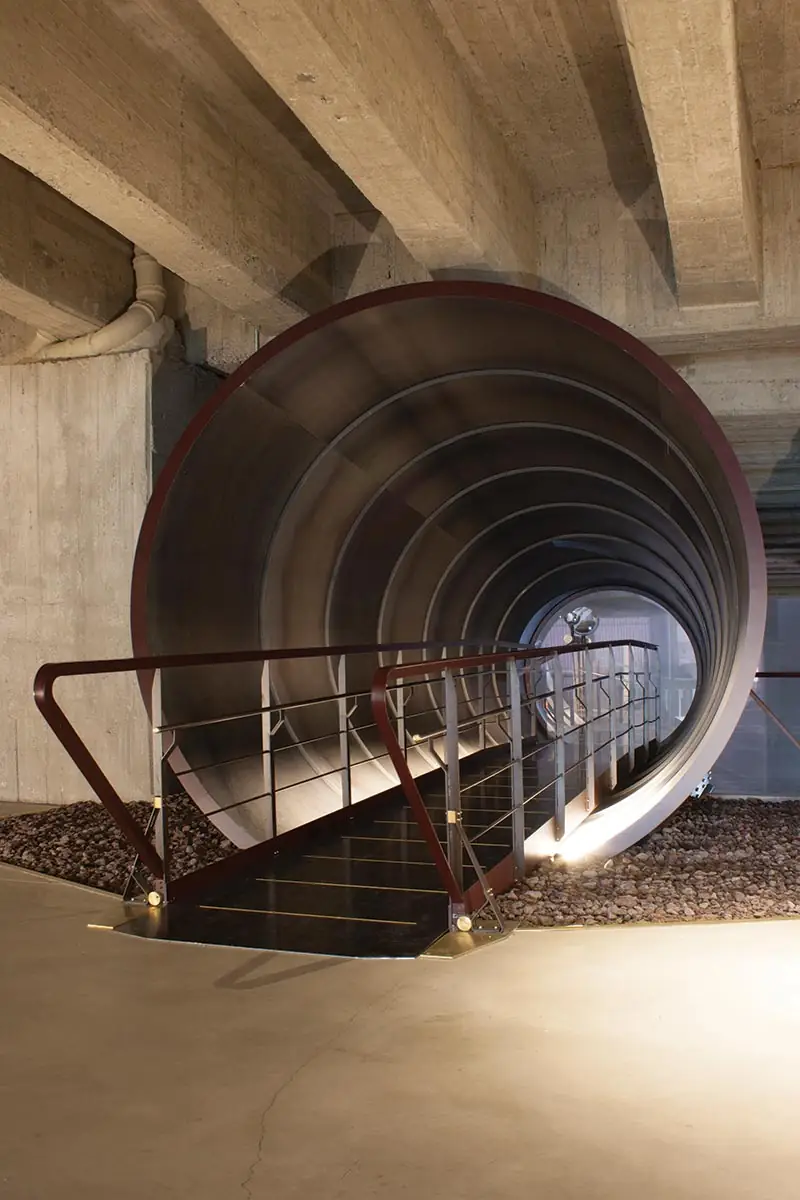
2
During the German occupation of northern Italy from 1943 to 1945, many Italians helped put Nazi plans into effect or profited from Italian internment camps, a bitter truth. Monuments to partisans and to fallen soldiers are found in towns and cemeteries across the peninsula, but remembering the Jews takes a special effort. The use of the Hebrew term Shoah in the memorial’s name reminds us that the Memoriale is, first, a place to recall the Jewish Holocaust. In time, the Memory Wall, which now lists only the names of the Jewish deportees, will include all the other victims as well. Architects will remember the name of Gian Luigi Banfi (1910–45), of the firm BBPR, who died at Mauthausen-Gusen, deported from Milan for antifascist activity.
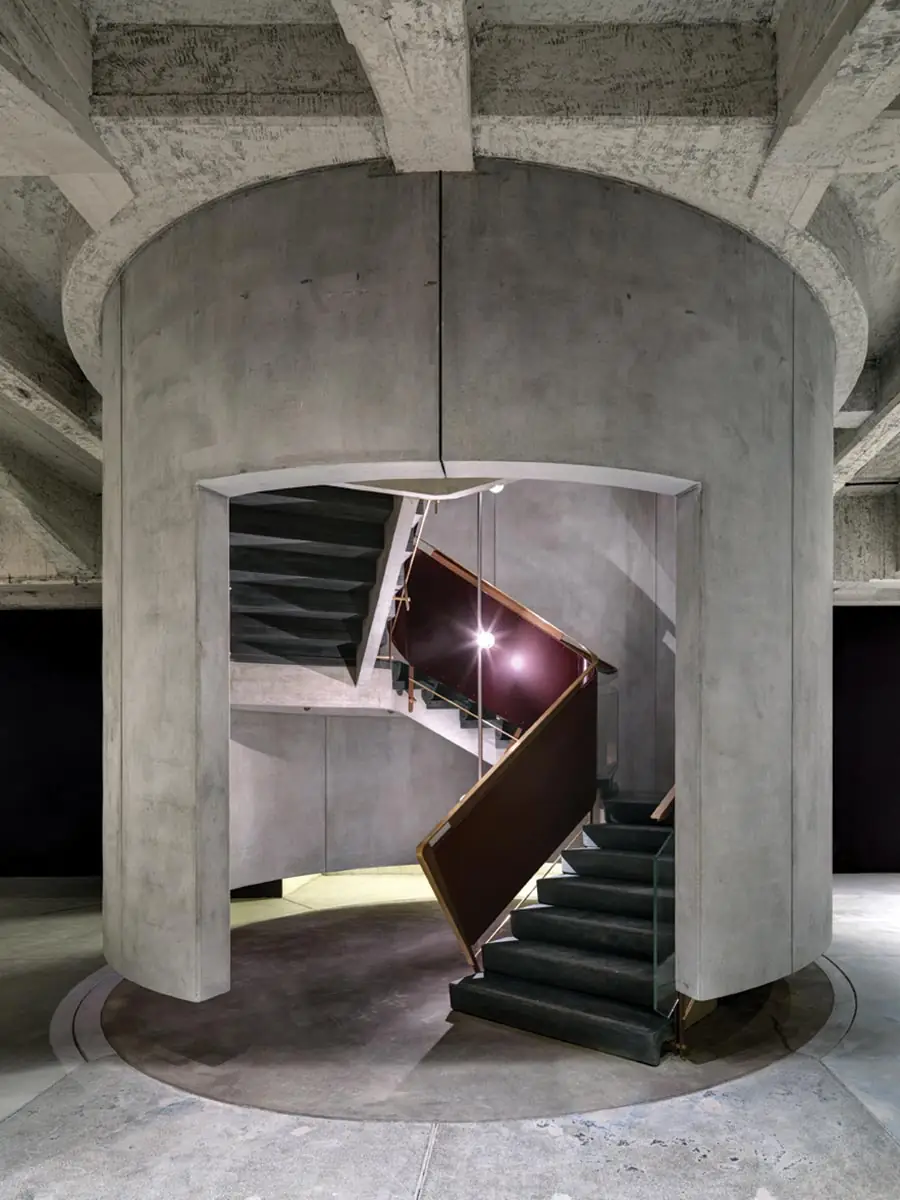
A staircase leads to an auditorium. Photo © Andrea Martiradonna
Italy’s best-known concentration camp survivor was Primo Levi, author of If This Is a Man (1947), a work of deep moral skepticism. The Milan Memoriale shares with Levi’s work a hard message: we cannot avoid the past and its implications for the present. The architects are to be complimented for communicating this message with grace and restraint; they have turned the site over to us as individuals. Are such spaces still needed? When I was there, a guide explained to a group of schoolchildren Mussolini’s promulgation of the racial laws of 1938. (Jews were fired from their jobs, forbidden to own property, and barred from schools.) Suddenly, the students’ teacher stepped forward and asked to say a word. “Remember,” she told the group—perhaps mindful of the recent Italian election of a right-wing government with roots in Italy’s fascist past—“many people consider Mussolini a great statesman.” Indifference is all around us.
Click plans to enlarge
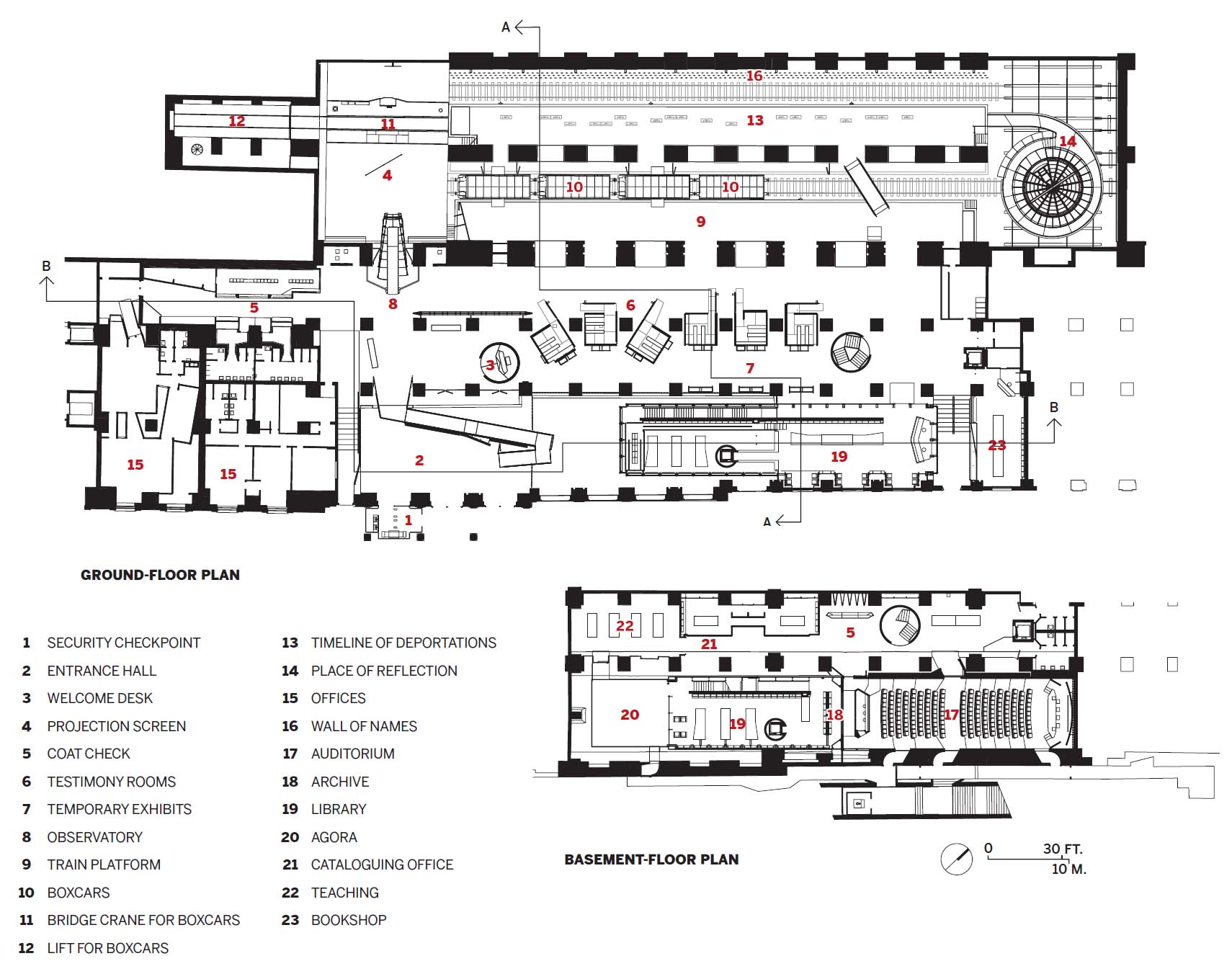
Click sections to enlarge
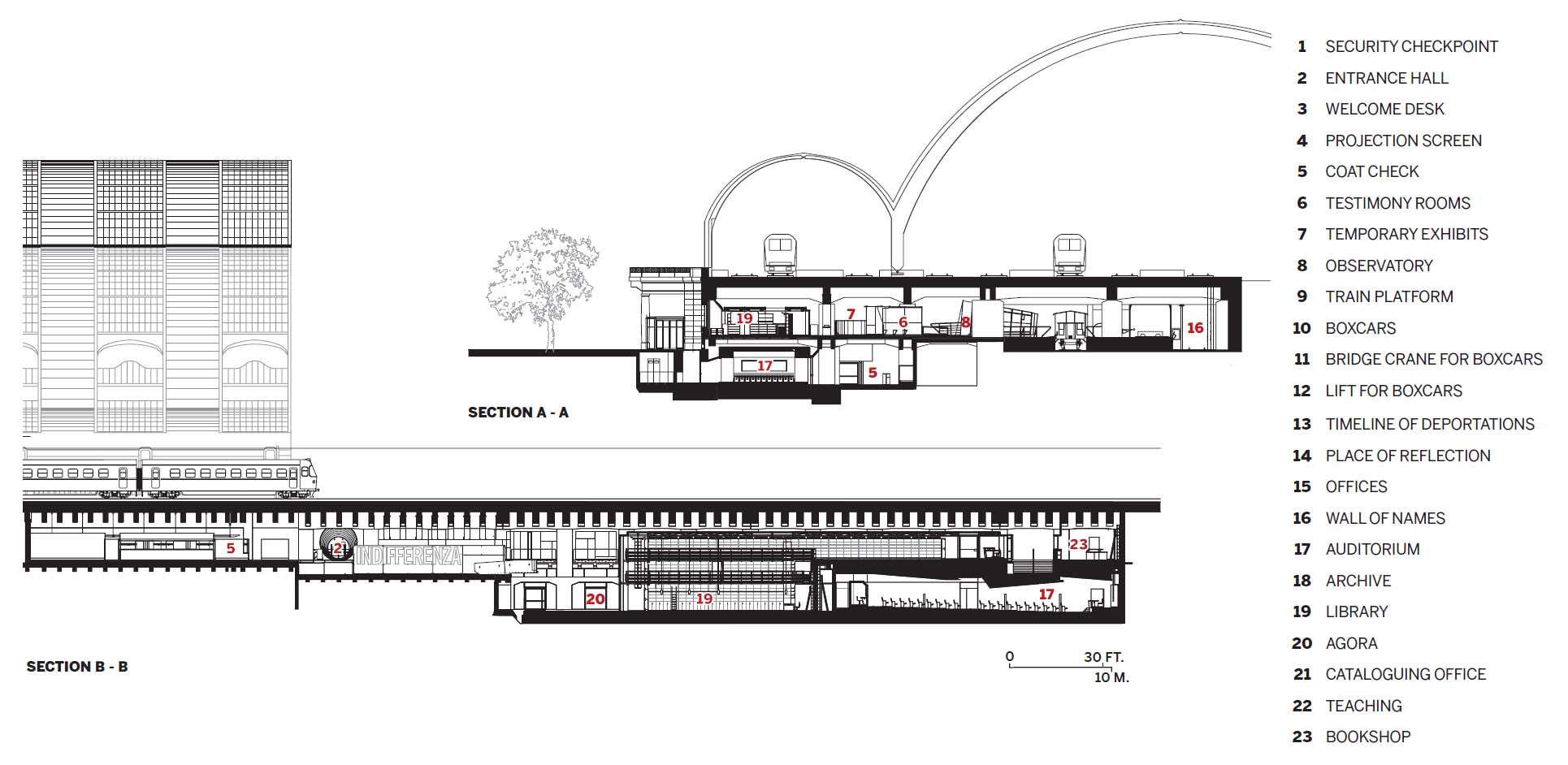
Credits
Architect:
Morpurgo de Curtis Architetti Associati — Annalisa de Curtis, Guido Morpurgo, partners in charge; Olga Chiaramonte, Matteo Isacco, Enrico Miglietta, Matteo Quaglia, Valeria Radice, design team
Engineers:
Lussignoli Associati (structural, first stage); Studio Genovesi (structural, completion); Giovanni Ziletti (mechanical/electrical, first stage); Carlo Gatti (mechanical, completion); Corrado Forner (electrical, completion)
General Contractor:
SACAIM (first stage); Percassi (second stage); de Marco S.r.l. - financed by the Italian Ministry of Culture and Regione Lombardia (Local Government of Lombardia Region); Segretariato Regionale della Lombardia of Italian Ministry of Culture (Contracting Institution)
Consultants:
Paolo Gasparoli and Maria Cannatelli (conservation); Gian Paolo Treccani (scientific advice on restoration); Ferrara Palladino e Associati (lighting); Cesare Trebeschi (acoustics); Kooa (multimedia)
Client:
Fondazione Memoriale della Shoah di Milano ONLUS
Size:
79,000 square feet
Cost:
$13.2 million
Completion Date:
May 2022
Sources
Glass:
Saint Gobain
Chairs:
Livoni
Downlights:
Philips





Post a comment to this article
Report Abusive Comment